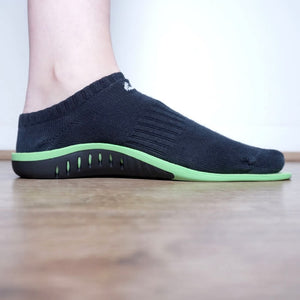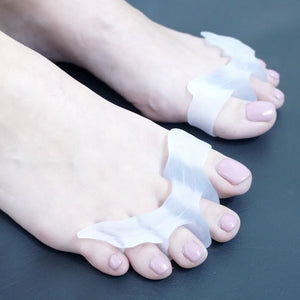Procedure Guide - Hammer Toe Surgery

Prevention and treatment should begin before or in the early stages of a hammer toe developing. If left untreated for a long period of time and the deformity becomes severe, then hammer toe surgery may be the only option. Surgery aims to straighten the toe and keep it in that position.
In this article, we’ll go through the procedure of hammer toe surgery and explain the risks and complications, and what happens before, during and after the operation.
Possible Risks and Complications
As with most surgeries, there are possible risks and complications. This is no exception with hammer toe surgery.
Residual Stiffness
One of the most common complications is postoperative stiffness of toe joints. In the case of arthroplasty surgery, the joint will have residual stiffness even after extensive physical therapy treatment and rehabilitation protocols.
Loss of Movement in Toe
For tendon transfers you will lose the ability to move your toe.
Swelling
Swelling is a normal part of the healing process. It can persist even up to 6 months after the hammer toe operation and in some cases, it may become permanent.
Molding
Molding occurs when adjacent toes apply pressure on a hammer toe for a prolonged period of time and cause the surgically treated toe to take the shape of adjacent toes.
Reocurrence of Deformity
It’s possible for a the hammer toe to develop again if adequate decompression of joint was not done at the time of surgery. It can also happen once the wire is removed 4 weeks after the surgery. If the bones are over-resected, the toe will be unstable and floppy.
Wire Issues
Wire that is used for fixation of the bone resection site can be the cause of complications. It can move, break, and cause localized infection (pin tract infection).
Vascular Compromise
The most serious complication after hammer toe surgery is vascular compromise. It is very important to maintain a good blood flow to the toes after surgery in order to prevent it. If you have blood vessel diseases, atherosclerosis, diabetes mellitus, vasoconstriction or nicotine consumption – you will have a significant risk of vascular complications.
It often occurs if extensive soft tissue release was done during the surgery or if there was an injury to the blood vessels. That will decrease blood flow to toe causing tissue ischemia, possible gangrene and amputation.
Nerve Injury
Surgeons will take great care not to damage any nerves during the operation but if this occurs, it’s usually temporary though it can be permanent. Nerve damage can cause numbness, pain and a tingling sensation in the toe.
Other Complications
Other possible complications include wound infection, wound breakdown (dehiscence), hematoma, deep vein thrombosis and a painful scar.
Preparing for the Operation
Prior to hammer toe surgery, you should be well prepared in order to reduce the chance of complications occurring.
Some things you can do to prepare for the operation include:
- Maintain good hygiene of your feet – cut your toenails and keep them clean
- Take a warm bath daily in order to relax your muscles and joints and moisturize the skin. Make sure to dry your feet after a bath.
- Pay special attention to the skin between toes as it is more sensitive than the rest of the foot
- Remove all nail polish before the surgery
- Stop smoking cigarettes and any other nicotine consumption. Nicotine will affect blood vessels, causing reduction of blood flow. This can be very dangerous as it can cause severe blood flow reduction and eventually wound complications such as wound separation, infection, gangrene. You should quit smoking a few weeks prior to surgery in order to allow blood vessels to regain better blood flow.
- Some medicines such as Aspirin and NSAIDs or herbal products can affect blood flow during and after the surgery. You should stop taking herbal products prior to surgery and check with your doctor which medicines are safe to take and what to avoid.
- Read over information provided regarding your surgery
The Surgery Procedure
There are multiple surgery options for a hammer toe. For each option, the goal remains the same – to straighten the hammer toe.
Tenotomy
The least invasive surgery is called tenotomy. It’s based on cutting of the tendon, which causes the deformity. A small incision is made in the toe which allows the surgeon to see the tendon and to cut it. After that the toe will be straight but you will not be able to flex it. It may be used if you have flexible hammer toes.
Tendon Transfer
Another surgical option to straighten hammer toe is the transfer of tendons. In this case, the tendon will not be cut. Instead, the affected tendon will be released from its attachment to the bone and transferred to another location on the toe, pulling the toe the other way and reducing the deformity.
Arthrodesis
This surgery involves cutting the ends of both bones in the affected joint. Small wires or plates will be inserted to straighten the toe and maintain that position. Once healed, the wires will be removed and your toe will be rigid (unable to move).
Arthroplasty
This surgery involves removing the ends of affected bones (half of the joint), creating space for them to move and straighten. During the surgery, wires will be inserted to keep it straightened and they will be removed after a few weeks.
Toe Amputation
Much rarer than other types of surgery, toe amputation removes part of the toe that is causing trouble.
How Long Will the Operation Take?
The length of surgery depends on the type of hammer toe surgery. The least demanding surgery is tenotomy and the surgeon can perform this procedure within 10-15 minutes.
On the other hand, surgeries such as arthrodesis and arthroplasty will need more time and expertise in order to be done correctly. A surgeon will probably need 45-60 minutes for this type of procedure.
Will it Be Done Under Anaesthesia?
There are several anaesthesia options. Minor procedures such as tenotomy can be done under local anaesthesia where a series of injections will be given at the ankle or knee.
You’ll be awake during the operation but you won’t feel any pain, only the sensation of touch. Local anaesthesia will wear off 3 to 10 hours after it’s given. This form of anaesthesia has a lower risk compared to general anaesthesia.
Surgeries which demand cutting of the bone will cause more pain so general anaesthesia will likely be used instead. You’ll be unconscious (asleep) throughout the operation and you’ll be unaware of anything and unable to move.
After the Procedure
For your own safety, you should have a responsible friend or relative to make sure you get home safely and to stay with you after the surgery. This is in case you feel unwell and need assistance.
Will I Need to Use Crutches?
After the surgery, it’s important to avoid applying pressure on treated toe. A special shoe and crutches will be provided to help with your balance and general activities in early post-operative period.
Will I Need Medication?
In most cases, you will get one done of antibiotics before the surgery in order to avoid infection. If further antibiotics are needed after the surgery they can be administered. Pain management is an important part of post-operative protocols. You will be prescribed pain killers in order to manage any pain you might have.
What Can I Do?
Some things you can do in order to have a smooth recovery include:
- Keep the leg elevated in the first few days after the surgery in order to reduce swelling
- Keep the bandages clean and dry
- You should always have a gauze and tape placed so that they keep the toe in the corrected position
- In early postoperative stage wear a wooden-soled shoes which don't bend the toes
- Wear wide toe box shoes in later stages of postoperative period
- Use crutches to help you with your balance and keep pressure off your foot
What Should I Avoid Doing?
- Avoid putting pressure on the foot during early postoperative period as it can damage the wires used for fixation
- Don't remove bandages unless you’re told to do so by a doctor
- Don’t getting your bandages wet to avoid contamination – you should avoid taking baths or showers. If the bandages get wet, they should be removed and replaced with a new sterile bandage.
- Don’t drive at any time while you’re wearing the post-op shoe or while the stitches are still in
- Avoid smoking while recovering from surgery as it can cause reduced blood flow
What is the Recovery Time?
Recovery time after hammer toe surgery will depend mostly on the type of procedure. After tenotomy, you will recover quickly. Once the wound is healed, you should be able to continue with your normal daily activities. Generally speaking, 2 weeks should be enough for recovery after tenotomy surgery.
Surgeries such as arthroplasty and arthrodesis will need a lot more time to recover as bones are cut and they need more time to heal. Usually, wires are removed after 2-3 weeks in the case of arthoplasty.
For arthrodesis, you will have to wait until the bones are fully healed in order to remove the wires. In most cases, they are removed after 4-6 weeks.
A review assessment will usually be scheduled 6 months after your surgery to see how well you’re recovering. Full recovery can be expected after 6-12 months.




